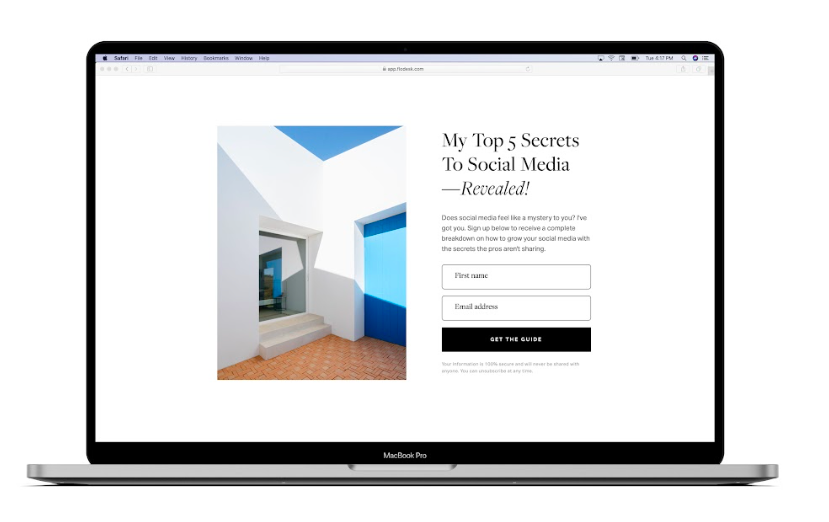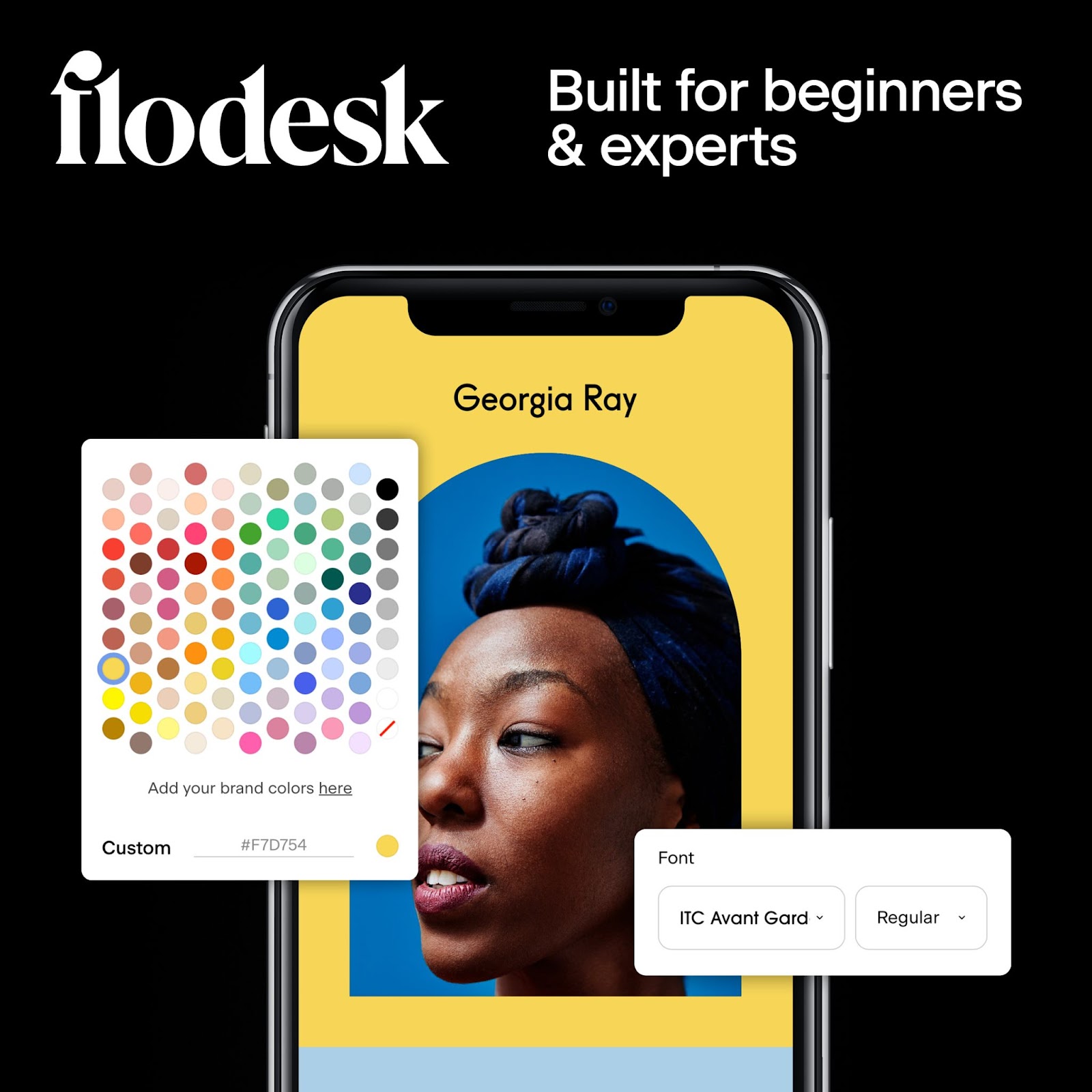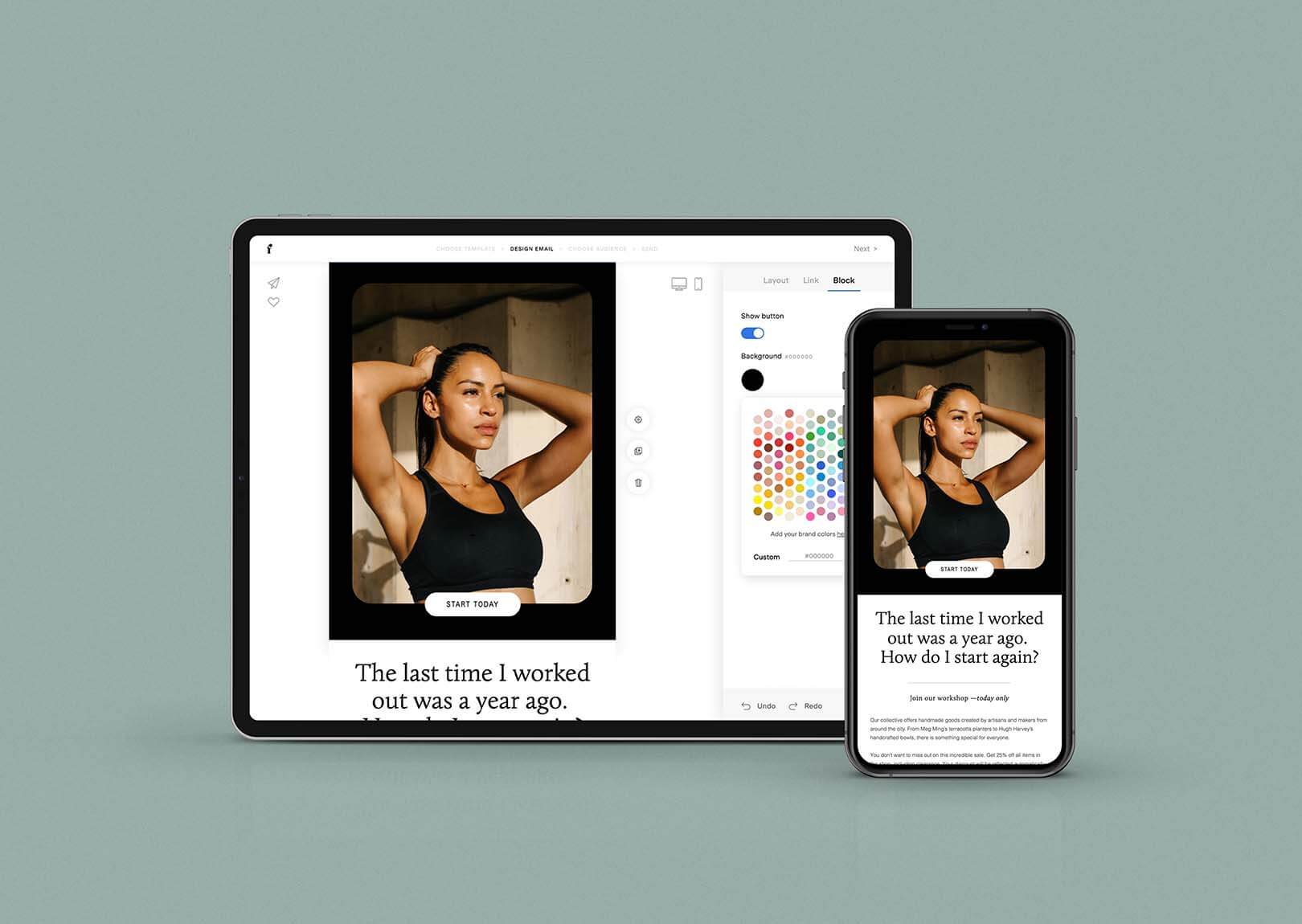How to start a side hustle e-commerce business
Table of Contents Jump to:
Jump to:
Table of contents
Want to break free from your day job and do something on your own? A side hustle could be the way to go! If you’re anxious about it, an ecommerce store could be a good way to dip your toes in the water.
Are you a regular nine-to-fiver looking to get into online coaching? Or maybe you create custom jewelry on the side that everyone you know loves? You can make it happen. It just takes a little research and planning.
Let’s dive into the six steps you should take to set up your online business (from scratch). We’ve got some tips too to ensure your success.
Get unlimited email sends & subscribers with Flodesk
We’ll never increase pricing because your email list is growing
6 steps to setting up your ecommerce side hustle
Building a business from the ground up is no easy feat, but ecommerce gets rid of some of the tougher barriers like figuring out where to set up a physical location. With ecommerce, you don’t need to hire staff (yet) and you might now even need to create a product or stock inventory, depending on your business.
This makes the financial implications a lot less scary. It also allows you to do it in small increments, building your business at your own pace. Here’s how you can get started.
1. Choose a side hustle that works for you
When deciding what kind of business you want, think about your interests, skills and connections. What are you passionate about? What are you good at? As you ask those questions, try to find areas of overlap.
Here are a few popular ecommerce side hustles to spark an idea for yours:
- Offer business or life coaching services
- Launch a dropshipping business
- Create and sell a unique product
- Build and/or design websites
- Start your own skincare, makeup or clothing line
- Open an online bakery or meal prep service
- Start a niche blog
- Develop online courses
- Offer freelance writing services
- Become a fitness and/or nutrition trainer
- Offer social media management services
- Build a marketplace or membership community
- Offer interior design services
- Launch an event planning business
- Provide digital marketing services
Nothing jumping out at you? That’s okay—the idea is to identify a business idea with potential and start your journey there.
Get to know your potential competition. Scope out similar businesses to see what your competitors are doing and gather information on what you need to do to build your ecommerce business.
Let’s say you’re planning on creating and selling a unique or niche product like Yvette and Lindsay did over at Hair for the Girls. First, Google similar businesses (in this case, something like “wigs”) and then answer the following questions:
- What specific products or services do they offer?
- How are they making money (ie selling products or services, charging for ad space or affiliate marketing)?
- How is their website set up?
- What is their pricing structure?
- Are they active on social media? If so, which platforms?
- Are they focused on a niche market?
- Do they have a sign-up form to join an email list?
- Do they have a blog?
- What is their checkout or registration process like?
- What type of payments do they accept?
- Is it a one-person business or do they have a team?
As you gather information, think about your own business and use your findings to come up with a business model that works for you.
3. Identify and learn about your target market
There’s an old saying in the business world: If you’re selling to everyone, you’re selling to no one. And it’s so true. While it may feel counterintuitive to narrow down your list of potential customers, there’s good reason to do so.
Imagine two event planners. One decides to take any work she can find—weddings, conferences, birthday parties, she’ll do it all. The other decides to focus on corporate events for businesses in the DC metro area.
The event planner who specializes in corporate events can create messaging around the pain points corporate customers experience often. She’s also able to get hyper-specific with her website SEO so she shows up first when businesses search for a corporate event planner.
The corporate events planner can make strategic decisions about social media too, spending more time on LinkedIn instead of Facebook because that’s where her target market hangs out.
So while the do-it-all event planner may cast a wider net, the targeted event planner is the one likely to land more deals.
With this in mind, spend some time figuring out your target audience and who you want your ideal customer to be. Then, learn as much about them as you can.
- What are their pain points? What problems are they trying to solve?
- How exactly does your product or service help them?
- Where do they hang out online?
- Do they use desktop or mobile devices frequently?
- How old are they?
- How do their age differences impact their behavior?
- Where do they live?
- Will they be interested in your product given their location?
- What type of jobs do they have?
- What’s their average income?
Not sure how to find the answers to these questions? Look over existing market research, conduct surveys, ask around on social media or even observe your competition on various social media platforms, taking note of who’s interacting with them and how they’re responding.
4. Set up your website or online store
Now it’s time to get to the nitty gritty—setting up your online store. If this part makes you sweat, don’t worry, we’ve got you. There are tons of beginner-friendly, non-techy website builders out there that’ll walk you through the process.
Most builders make it easy to pick a template, use the drag-and-drop editor to get things into place and voila! You’re open for business. Here’s a list of a few website builders that make it easy to set up an ecommerce site:
Shopify: Powering over 800,000 online stores, Shopify is easily the most popular all-in-one ecommerce website builder. It’s perfect whether you’re planning to sell physical or digital products. It has a quick launch tool that gets you up and running using an intuitive store setup wizard.
Squarespace: Squarespace combines ecommerce options with robust blogging capabilities that far exceed what you’ll get with similar platforms. It’s a good choice if your side hustle is strongly focused on blogging, influencing or affiliate marketing.
Wix: Wix is the most beginner-friendly ecommerce builder on the market. It may not be as feature-packed as Shopify, but when you’re just starting, you may not need those extra features anyway. Its focus is on simplicity and ease of use.
You can use any of these platforms to build a shop online. Once you’re set up, you’re in business!
5. Figure out the logistics
Whether you offer a service, sell digital downloads or ship physical products, there are always logistics to consider. Let’s take a look at each scenario:
Service side hustles: If you offer services, you’ll need to consider things like scheduling and what technology you’ll use to deliver your service. For example, what type of video conferencing platform will you use? How about project management software? Do you need to draw up contracts or other agreements? Think through your process as if you were a customer, and write down the steps you need to make it a smooth process.
Digital product side hustles: With digital products like courses or templates, you’ll need to figure out how to get your product to your customers. If you’re selling courses, will you use a platform like Teachable or embed a series of videos in an email? If someone orders a downloadable template, are you going to respond manually or use an email automation tool?
Physical product side hustles: These businesses require the heaviest logistics lift. Who’s your supplier or manufacturer? What type of packaging are you going to use? Will you be shipping items from home (and storing inventory) or using a fulfillment service?
Before you get anxious or overwhelmed, check out this article from Shopify to learn more about how to get started. You can do this!
6. Promote your business
At this point, you’ve got everything planned out, and your website’s up and running. Now it’s time to get the word out! One of the best ways to do this is through email marketing.
Don’t have anyone on your email list yet? No worries. We’ll help you get started:
Create opt-in forms
Opt-in forms are great for promoting your business and building an email list. They typically work by offering potential subscribers a discount code or free download in exchange for an email address.
Author’s note: Flodesk has a wide variety of beautiful sign-up form templates that make it easy to get more subscribers with minimal time and effort. Take a peek at our top sign-up form examples.
Add pop-up forms to your website
Pop-ups are a fantastic way to turn website visitors into new subscribers, but it’s important to use them sparingly so they don’t become annoying. We recommend only adding one pop-up to your homepage, for example. It’s also important for your pop-up to be consistent with your branding so it looks like an extension of your website instead of spam.
Once you’ve created your forms, promote them on your social channels. You can even do this before your website’s off the ground. The most straightforward way is by including a link to your sign-up form in your bio (if links aren’t allowed in your posts).
You can also use tools like Instagram stories to build your email list and drive sign-ups. Hype upcoming launches and promotions and hint that your subscribers will get early access to all the details. You can even add Instagram story stickers that link directly to your opt-in form.
Add CTAs to your blog posts
Have a blog? It’s a great place to include your opt-in form. Add a few buttons throughout your blog post, preferably one near the beginning and one towards the end. Then, use those buttons as calls to action to join your subscriber list. Check out ours:
Get unlimited email sends & subscribers with Flodesk
We’ll never increase pricing because your email list is growing
Ask customers to opt-in during checkout
Chances are your checkout process already requires an email address to send order confirmations and other transactional messages. So ask customers to opt-in to your email list while they’re at it.
Just remember to be clear about what they’re signing up for and ask them for express consent, as this will lead to fewer unsubscribes and complaints down the road. Also, ask customers to specify their preferences at this stage so they can opt-in to the kind of email communications they’re most interested in (i.e. coupons, newsletters, new releases, etc.).
Want to learn more about email marketing? Read this next: The Conclusive Guide to Ecommerce Email Marketing (+ 9 Tips to Succeed)
5 tips for a successful ecommerce side business
Now that you know how to get your side hustle up and running, here are some tips to make it successful.
1. Automate what you can
If you’re starting an ecommerce business, you may also be working a full-time job, which means you can’t dedicate every waking moment to the business. Enter: automation. Taking the time to automate mundane tasks, like sending emails or posting on social media, can make it seem like you’re there even when you’re not.
As you can see above, you can use software like Flodesk’s email builder to set up automated workflows that trigger based on customer actions—like signing up for your email list. You can also automatically add subscribers to specific segments or send them your most recent ecommerce newsletter. There’s a lot you can automate, but those are great starters.
2. Outsource the extras (if you have the budget)
You don’t have to be a jack of all trades to be successful with your side hustle. It’s often better not to be. Outsourcing unfamiliar tasks not only saves a ton of time (which is in short supply to begin with) but also gets the job done right. Tasks ripe for outsourcing include copywriting, social media management, video production and search engine optimization.
3. Use a relatable brand voice to connect with your audience
When customers feel connected to your brand, 57% of them will increase their spending with your brand and 76% will buy from you over a competitor. So, how can you connect with your customers?
Using a relatable brand voice is a good start, along with sharing your core values. Creating a brand voice is all about showing up with a consistent personality, including how you talk to your customers.
It’s also important to communicate with your customers in real time, meeting them where they are at that moment. Some of the best tools to connect with your customers include:
- Social media
- Virtual events
- Contests
4. Provide exceptional customer service
Long gone are the days of customer service being confined to a call center or service counter. With ecommerce, customer service is everywhere—on social media, via email, through live chat and more. Take the time to incorporate exceptional customer service into your business model. It will build positive relationships with your customers and keep them coming back.
Even when you’re unavailable, you can use chatbots or automated email sequences to respond to customers in real time.
5. Keep things fresh
People don’t want to see the same thing in their inbox every week or month. They don’t want to see the same tired ads as they’re scrolling through social media or the same cheesy pop-up forms when they visit a website. If you want to cut through the noise, keep things fresh and authentic, from messaging to design.
Here are a few ways you can do this:
- Look for professionally designed templates for ads, email, website design and more
- Only send content that’s relevant to the customer, focusing on quality over quantity
- Always use your brand colors and fonts
- Include stunning graphics and visuals
If you’re using email marketing to promote your business (and you should!), Flodesk’s pre-designed ecommerce email templates are a good way to keep your brand looking fresh.
Our intuitive email builder includes drag-and-drop functionality along with easy-to-use layout blocks. With layouts, members no longer need to use third-party software like Canva or Illustrator to create custom graphics; you simply add a new layout to create incredible designs with specialty fonts, all right within our platform.
Get unlimited email sends & subscribers with Flodesk
We’ll never increase pricing because your email list is growing
You’re ready to start your ecommerce business side hustle
Starting your own business doesn’t have to be just a dream. Online selling is a great way to test things out without taking on a lot of risks. Here’s a quick recap of the six steps you need to get started:
- Choose a side hustle that works for you
- Research related ecommerce businesses
- Identify and learn about your target market
- Set up your website or online store
- Figure out the logistics
- Promote your business





